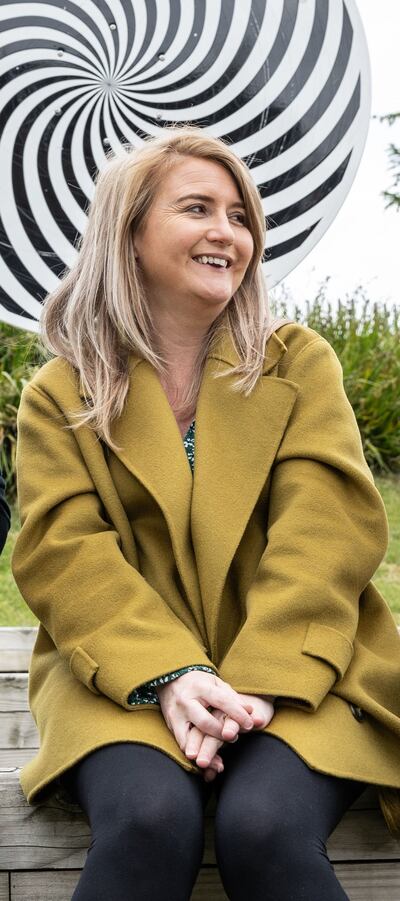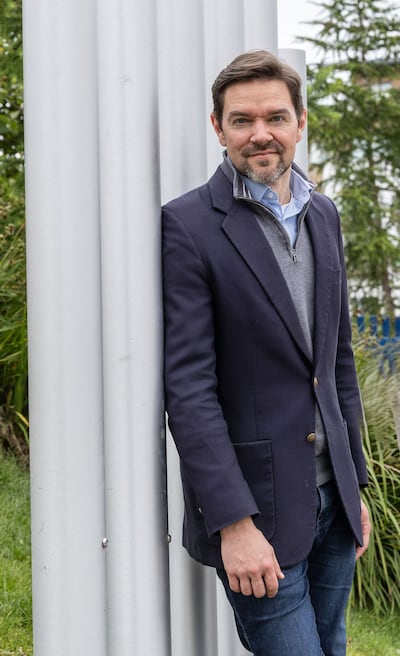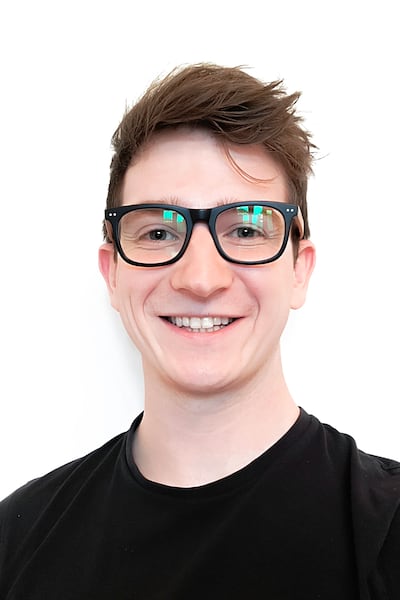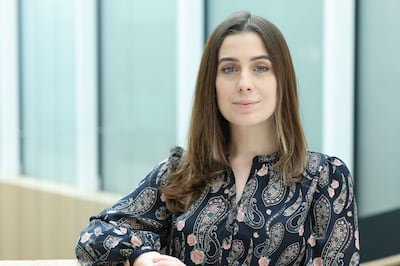Homeless people who will be treated at a newly built, 100-bed medical and addiction care centre on Dublin’s quays inevitably come from scattered lives that can disrupt their after-care.

But a new, digital medication management system is being set up to streamline and safeguard their treatment upon discharge into the community. It is one of five projects announced this week as recipients of funding from Smart D8, which champions innovations for health benefits among the 45,000 population of Dublin 8. These projects may start locally, but come with ambitions for citywide, national and even global expansion.
Dublin Simon Community is opening the new health centre at Usher’s Island (located on the south side of the River Liffey, between the city centre and Heuston train station) in August. It will consist of 54 clinical beds and 46 beds for people recovering from addiction. Many of those attending the charity’s clinical services are addicted to several substances.
“The diversity of the substances that the clients are using has increased dramatically,” says Eavanna Maloney, senior nurse manager of Dublin Simon Community’s clinical services. “Our detox unit used to be for generally men who were addicted to alcohol and nothing else. Then it was men who were addicted to alcohol and benzodiazepines. And now the majority of our referrals would be alcohol, benzodiazepines, opiates and crack cocaine.”
Death of Pope Francis latest updates: Ireland’s representatives at funeral are confirmed
Leinster’s success masking alarming fault lines which have emerged in Irish rugby
Marc Canham steps down from role as FAI chief football officer
Chief medical officer Mary Horgan: ‘People often forget how bad infections were; our memories sometimes are short’
This increases the complexity of managing clients’ treatment. “So people are coming with long-term chronic conditions that are associated with substance use and/or homelessness.” Then, on discharge into the community, “our clients can be very transient, and they can receive care from multiple providers”, says Maloney.

To combat some of these organisational challenges, Dublin Simon Community is aiming to replace paper-based administration for patients’ medication with a digital medication management system. This will start with the blood-borne virus unit, which has eight beds for those with HIV/Hepatitis C who are being stabilised from drug addiction, and is set to move into the new centre next month. Also transferring to the new building are 14 detox beds, and 12 “step-up step-down” intermediate care beds.
A further 20 clinical beds are due to be phased in. “We already have a digital case management system that we rolled out last year, so the teams are well prepared now to do a medication management system that is digital,” Maloney says.
If a GP went to prescribe something for a client, and it was contraindicated with other medications that they were on, this software will flag that
— Eavanna Maloney, Dublin Simon Community clinical services
Digicare has provided them with a bespoke product to work with. “We have very specific benzodiazepine and alcohol detox titrations and we were able to build in those detoxes and titrations into their medication management system.” This will have a huge impact on client care and safety, says Maloney, especially after people are discharged.
Currently, GPs have to transcribe medication from the clinical services’ records. With the new digital system, doctors can pull the data from a patient’s specified medications list, she says, and the chances of an error are much reduced. Doctors will also be using the system in conjunction with the facility’s nursing staff and will be able to amend a patient’s medication regimen. “They can communicate with our pharmacy using this software. So it makes everything far more systematic and evidence-based.” There are more protections in the system. “If a GP went to prescribe something for a client, and it was contraindicated with other medications that they were on, this software will flag that.”
It should provide increased safety for clients not only after discharge but also when they are readmitted. “A lot of our clients would come through the service multiple times, and each time we would have to go out to all of their providers and clarify what medication they’re on.” Now it should all be on the system, which will reduce time spent on administration for nurses.
“That frees up more time to have interactions and conversations with clients, which is still the basics for the most important part of nursing care,” says Maloney. There will also be a reduction in costs because they will no longer have to print paper-based medication cards, nor need the archival storage space for these records.
Before the Covid-19 pandemic, Dublin Simon Community’s clinical services did not even have access to the secure Healthmail system. All prescriptions had to be sent through registered post to GPs and other healthcare providers. The introduction of Healthmail did make the process easier and cheaper, but the risk of transcription errors remained.
Making theatre work for brain health
Using the theatrical arts to enhance brain health is another pilot project that has secured Smart D8 funding. A brain health workshop is to be developed this September with people living with dementia. What is learnt from that will be brought to a second workshop in the wider community, with a focus on destigmatisation and the preventative power of theatre against cognitive decline.
We know that both attending and participating in the arts is good for your brain, says associate professor Dr Nicholas Johnson, head of the drama studies department at Trinity College Dublin. He believes there is untapped strength in the world of theatre for healthcare, as it hits some modifiable factors for dementia.

“It’s a set of skills that are really crucial to advancing... brain health in people who don’t experience dementia or don’t experience it yet. And also in supporting people who are experiencing it, whether it’s the clinical side or the care partner side or the life itself,” says Johnson, who works one day a week with the Global Brain Health Institute (GBHI), a joint venture between Trinity and the University of California in San Francisco. Its founding in 2015 was funded by the late Chuck Feeney’s Atlantic Philanthropies, and it is dedicated to protecting the world’s ageing population from threats to brain health.
The Smart D8-funded brain health project is a collaboration between GBHI and Outlandish Theatre (OT) Platform, with patients and clinicians at the Mercer’s Institute for Successful Ageing (Misa) in St James’s Hospital.
[ Homeless people often ‘fall through cracks’ of health systemOpens in new window ]
Compared with just sitting down and consuming screen content, theatre involves the social challenge of making connections with people. Audiences will also experience audio, visual, and maybe touch and olfactory, feedback.
“These are all senses that we know when activated are both activating and also protective,” says Johnson, a former child actor and theatre director who came to Ireland on a George Mitchell scholarship in 2005 to do a PhD on Beckett and never left. Theatre is also highly unpredictable, he points out. “It is novelty and risk, experienced in a safe environment.”
The first workshop is likely to involve about 20 people, including those from the theatre company as well as some clinicians, so maybe up to a dozen people living with dementia. Initially, it will be a case of finding out who the participants are and what can they do, he explains. “You discover, oh, this person has an amazing talent for music and singing; this person can move and is very comfortable. Oh, this person might be bound in a chair, but they have a brilliant speaking voice. And so you start to piece together and discover – how can we make moments?
If the health sector were to grow its artistic footprint, we could definitely find quite a lot of benefit that’s mutual
— Dr Nicholas Johnson, head of drama studies, Trinity College Dublin
“I would describe theatre in this kind of context as making moments matter. How can we make a moment matter for the participants and for the observer?” In working on those moments, they are created into something really worth experiencing and watching, Johnson says. By evaluating what is achieved through these two workshops, they should have “proof of concept” that could then be applied more widely.
“We’re trying to understand what works well in these workshops that could be actually grown and distributed to a wider community with a little bit greater research funding or greater arts funding.” Internationally, there is a lot more published research on the use of music, dance and visual art within the dementia community.
“I would say all of them are ahead of theatre because they’re just less complex, frankly. They’re less complex to structure a workshop around. A lot of people have a musical instrument. A lot of people can draw if you put something in front of them.
“For theatre, you need a set of skills and embedded researchers that are just a little bit more resource-intensive, a little bit riskier. And so we’re hoping to build a workshop that can be reproduced by skilled practitioners in other areas.” One of their inspirations was the pioneering Penelope Project, in which academics, theatre practitioners and an elder care centre community in Milwaukee worked on a retelling of Homer’s Odyssey from the perspective of Odysseus’s wife, Penelope, who never left home.
Johnson also notes that there are many underemployed actors and other theatre professionals. “If the health sector were to grow its artistic footprint, we could definitely find quite a lot of benefit that’s mutual. I think recognising that there’s something that this discipline has to give is a helpful long-term strategy.”
Smart D8, which gives funding of more than €12,000 towards each pilot project, is essentially a matchmaker between innovators and a local community, says its ecosystem manager, Jack Lehane. It is a 12-partner consortium led by the Digital Hub, St James’s Hospital, Dublin City Council and Smart Dublin.

Acting as an “an honest broker for real health innovations and creating access to real people”, he says, Smart D8 provides opportunities for Irish and international innovators to investigate how technology and innovative approaches can improve health and wellbeing in an urban population. An essential part of each project’s evaluation is to describe what is needed to scale up the pilot programme.
Harnessing peer knowledge for disability health support
The innovative web dashboard being set up by the CP-Life Research Centre at the Royal College of Surgeons in Ireland (RCSI), to serve as a directory of local services and supports for citizens with disabilities, would clearly benefit a wider community. But in the pilot phase being funded by Smart D8, “we really want to drill down into the information that people need and want”, says Dr Jennifer Fortune, a senior research fellow at the centre. They will test out this presentation of information within a small area, “and then hopefully from there we can expand it”.

At the centre, where research covers the lifespan of people with disabilities, with a particular focus on those with cerebral palsy, they repeatedly hear across every age group that people cannot access services and activities that can support their health. They may be seeking medical or therapy services, but also amenities such as an accessible gym or accessible physical activity, she explains.
[ Minister for Housing ‘not surprised’ as homeless numbers rise againOpens in new window ]
“Part of the problem is that they don’t know where to get the information on what’s actually available to them in the community.” People will talk of searching online and not finding anything suitable – and then a chance conversation with somebody brings them to what they are looking for.
“It’s very, I suppose, ad hoc, and that means that isn’t an equal distribution of information,” says Fortune. With the Smart D8 award, they are aiming to create a one-stop, centralised directory that people can log on to.
Crowdsourcing will be a crucial element, in that members of the disabled community will be asked to add and review services. This will not only give more insightful details but also help to keep the information up to date. They expect it to prove empowering not just for people with disabilities, but also healthcare professionals who can struggle to keep on top of what is available locally when advising clients.
- Sign up for push alerts and have the best news, analysis and comment delivered directly to your phone
- Join The Irish Times on WhatsApp and stay up to date
- Listen to our Inside Politics podcast for the best political chat and analysis











